What If Tony Stark Became President, or What Is Cinematic Shooting
To make it clearer what distinguishes cinematic shooting, let’s compare a few video scenes that everyone can easily picture. Take, for example, the scene of Tony Stark giving a public speech on stage (remember the famous meme?) and the typical movie portrayal of an American president addressing the press. In the first case, it’s something dazzling. Right away you notice the play of light — spotlights and directed beams, flares, backlighting — in short, everything that turns the inventor Tony Stark into a superstar and his public speech into a spectacular show.
As for the shooting techniques, you immediately see the complete absence of static, strictly frontal shots. On the contrary, here you have tracking shots, high and low angles, and more. Now let’s imagine a typical cinematic American press room: a small podium with a seal and two flags flanking it. Behind the podium stands the speaker. And it doesn’t matter what exactly he is telling the media — news of the apocalypse or an update on progress toward building a brighter future. The speaker is shown mostly in static shots, switching between close, medium, and wide shots and showing him frontally, from the right, and from the left.
Notice — both examples are from films. So why was the “official” cinematic speaker filmed as though he were real? Precisely so our brains would better absorb the gravity of the situation depicted in the scene. After all, cinematic shooting is inappropriate in official videos. And we’ve grown accustomed to this on a subconscious level.
But why not shoot presidents, minister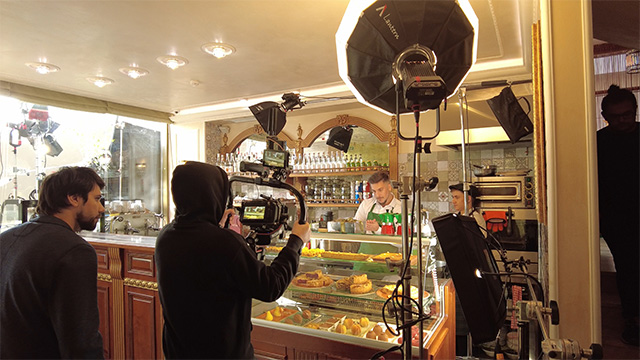 s, and other officials cinematically? Simple: think of Tony Stark. Now try to imagine a real minister in his place, delivering an official report on serious political matters. All those bright lights, spotlights and beams, tracking shots and choker close-ups (a kind of extreme close-up showing just the face from the mouth to the brows). It’s immediately clear — such shooting would turn even a somber eulogy into a flamboyant show. Artistic, to be sure. But utterly inappropriate.
s, and other officials cinematically? Simple: think of Tony Stark. Now try to imagine a real minister in his place, delivering an official report on serious political matters. All those bright lights, spotlights and beams, tracking shots and choker close-ups (a kind of extreme close-up showing just the face from the mouth to the brows). It’s immediately clear — such shooting would turn even a somber eulogy into a flamboyant show. Artistic, to be sure. But utterly inappropriate.
So. What is cinematic shooting? Let’s try to define it. Cinematic shooting is the deliberate use of camera techniques to realize the director’s creative vision. But. In fact, when shooting any video, its creator uses some sort of camera techniques. So cinematic video differs from any other only in the goals that the operators pursue.
The main goal of cinematic video is to impress, to evoke emotions in the viewer, to create a sense of immersion in the atmosphere on screen, to make the audience empathize with the characters.
Cinematic Shooting Techniques
So what cinematic shooting techniques captivate our imaginations as viewers?
Listing them all would fill multiple volumes. Because beyond the well-known, widely understood, and most frequently used techniques, every director and cinematographer has their own “aces up their sleeves,” some of which even become models for others to emulate.
On top of the “signature” and general techniques of cinematic shooting, any creator can come up with something new at any moment.
The Trombone Effect
Once upon a time, vertigo (also known as dolly z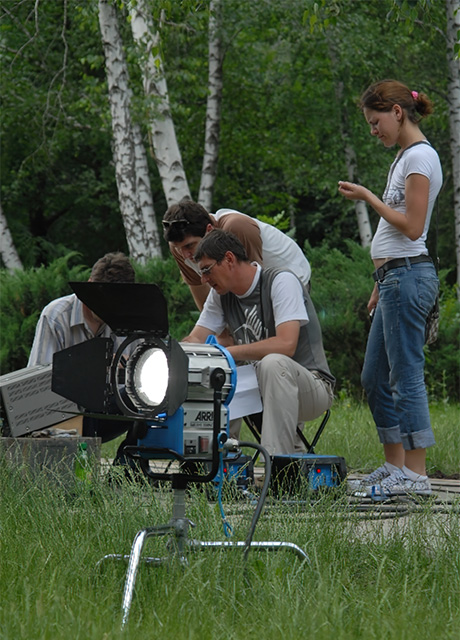 oom or the “trombone effect”) was invented. This is an optical effect in which the foreground objects stay in place while the background appears to rush away. Hitchcock first stunned audiences with vertigo in his 1959 film Vertigo. The technique was devised on set by second-unit cameraman Irmin Roberts (incidentally, the master didn’t even credit him in the titles). Hitchcock wanted to depict a character’s fear of heights. Roberts unexpectedly created a shot with a dizzying sense of depth. Since then, the dolly zoom has been used by many filmmakers in a variety of scenes.
oom or the “trombone effect”) was invented. This is an optical effect in which the foreground objects stay in place while the background appears to rush away. Hitchcock first stunned audiences with vertigo in his 1959 film Vertigo. The technique was devised on set by second-unit cameraman Irmin Roberts (incidentally, the master didn’t even credit him in the titles). Hitchcock wanted to depict a character’s fear of heights. Roberts unexpectedly created a shot with a dizzying sense of depth. Since then, the dolly zoom has been used by many filmmakers in a variety of scenes.
The Trunk Shot
Low-angle shooting — that’s the name of the cinematic technique in which the camera “looks” at the subject from below. If this technique had a fan club, its president would definitely be Quentin Tarantino. He’s the one who most often “peeks out” at his characters from inside a trunk. There are already countless compilations online of scenes from Tarantino’s films played out before a camera positioned at a very low angle.
Bullet Time
Bullet time is a cinematic shooting tech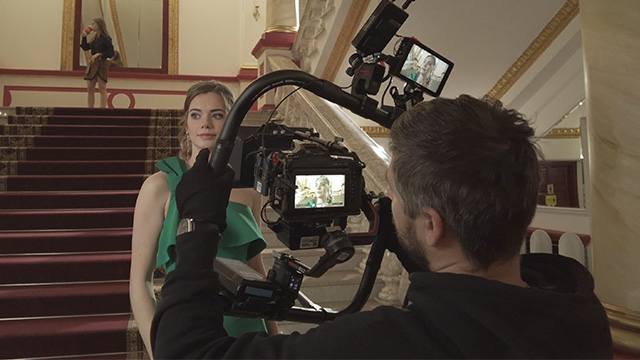 nique in which the subject “freezes” in place, creating the illusion that time has stopped, while the “viewer” moves around them. Perhaps the most famous example is the scene in The Matrix where Trinity freezes in a dramatic leap, the camera orbits her, and then the cyber-vixen ruthlessly kicks the agent in the jaw. Incidentally, that wasn’t the only instance of bullet time in The Matrix. The Wachowskis used it in nearly every fight scene.
nique in which the subject “freezes” in place, creating the illusion that time has stopped, while the “viewer” moves around them. Perhaps the most famous example is the scene in The Matrix where Trinity freezes in a dramatic leap, the camera orbits her, and then the cyber-vixen ruthlessly kicks the agent in the jaw. Incidentally, that wasn’t the only instance of bullet time in The Matrix. The Wachowskis used it in nearly every fight scene.
Since then, this impressive cinematic technique has crossed over into the event industry, becoming an attraction in its own right. Everything needed to create bullet time can now be booked for a private event as an activity for guests.
The Long Tracking Shot
At first 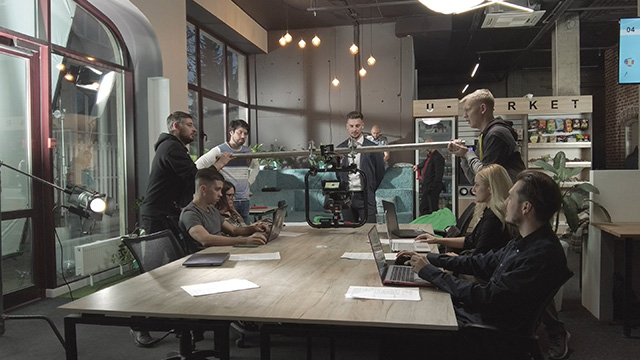 glance, it might seem that this cinematic shooting technique doesn’t require anything special. Just grab a camera and follow the character until the battery dies or the memory card fills up. But in reality, this is considered one of the most complex and labor-intensive techniques to execute. The long tracking shot, despite its casual appearance, is utterly unforgiving of mistakes and must be carefully choreographed and rehearsed many times. Everything that appears in the frame at that moment must be exactly where it belongs, looking exactly as it should. And whereas in standard shooting minor errors can be fixed in editing, in a continuous long take there’s no opportunity for cuts or inserts. No visual clarifications or hints. Everything is truly here and now.
glance, it might seem that this cinematic shooting technique doesn’t require anything special. Just grab a camera and follow the character until the battery dies or the memory card fills up. But in reality, this is considered one of the most complex and labor-intensive techniques to execute. The long tracking shot, despite its casual appearance, is utterly unforgiving of mistakes and must be carefully choreographed and rehearsed many times. Everything that appears in the frame at that moment must be exactly where it belongs, looking exactly as it should. And whereas in standard shooting minor errors can be fixed in editing, in a continuous long take there’s no opportunity for cuts or inserts. No visual clarifications or hints. Everything is truly here and now.
There are plenty of examples of long tracking shots — sequenc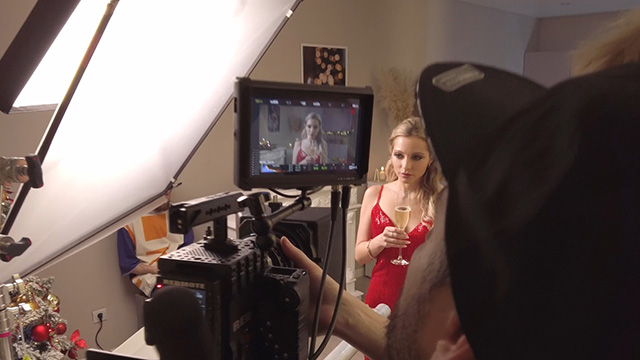 es lasting several minutes, or even an entire film, that never fail to impress seasoned viewers. Just imagine how many times everything has to be rehearsed! It seems like just one cinematic shooting technique: keeping the camera on the move. Yet in practice, every actor on set — from the leads to that “corpse” lying in the ditch in the background — must move or stay still at precisely the right time, carrying out the director’s instructions. And the lighting? The camera never stops, so the lighting crew has almost no time to reposition anything.
es lasting several minutes, or even an entire film, that never fail to impress seasoned viewers. Just imagine how many times everything has to be rehearsed! It seems like just one cinematic shooting technique: keeping the camera on the move. Yet in practice, every actor on set — from the leads to that “corpse” lying in the ditch in the background — must move or stay still at precisely the right time, carrying out the director’s instructions. And the lighting? The camera never stops, so the lighting crew has almost no time to reposition anything.
This means the lighting scheme must be planned and constructed in advance so that at every moment of the film everything is lit or shadowed exactly as the script and director require.
And so that not a single wire, stand, or other technical equipment appears in the frame where the audience shouldn’t see it. And that’s just th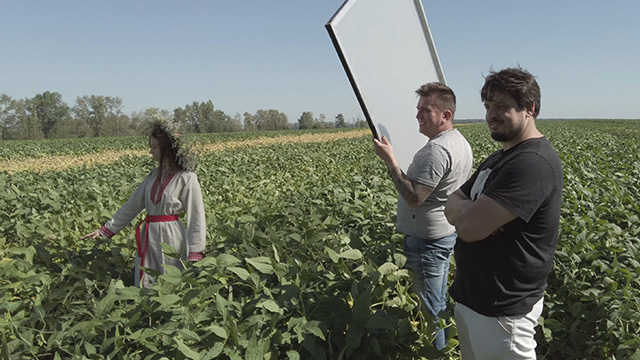 e camera crew! Now imagine the titanic work of the set decorators, costume designers, and makeup artists. Who knows what the director might decide? Over the course of a long tracking shot, the character may get into a fight and be injured, drenched, dirtied…
e camera crew! Now imagine the titanic work of the set decorators, costume designers, and makeup artists. Who knows what the director might decide? Over the course of a long tracking shot, the character may get into a fight and be injured, drenched, dirtied…
There are many examples of the long tracking shot, and not only in modern cinema. As early as 1957, Stanley Kubrick filmed a scene over a minute long without cuts in his Paths of Glory. In it, generals converse with soldiers while secondary characters move in and out, battles rage, and explosions can be seen in the background.
One more example comes from Alfonso Cuarón’s Children of Men, where the ambush scene on a car lasts four minutes without cuts. “We had twelve days to shoot the car ambush scene,” recalls Cuarón. “After ten days we still hadn’t gotten the right take. We had to push hard because the location rental expired after twelve days. On the eleventh day, through sheer chance, we got two takes. On the morning of the twelfth day, everything came together beautifully — but the cameraman fell, and we only got one usable take, which was ultimately approved.”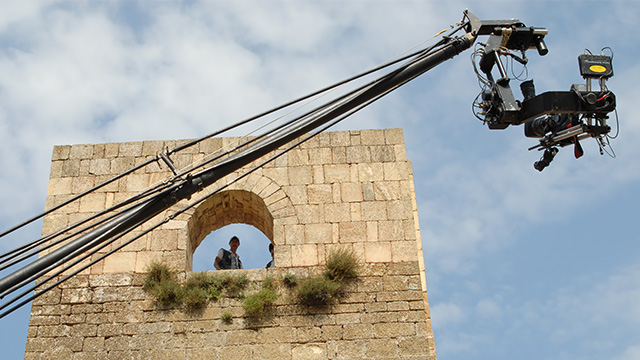
When you realize how much time, effort, money, nerves, and creativity go into making a video effective, memorable, original, and vivid, you watch it differently. And you even start to feel a mix of professional envy and inspiration. Such a strange, emotional blend. And you want to shoot something just as remarkable — something that excites you and earns the audience’s appreciation. And we will shoot it! But for now — let’s watch what’s already been filmed before us.